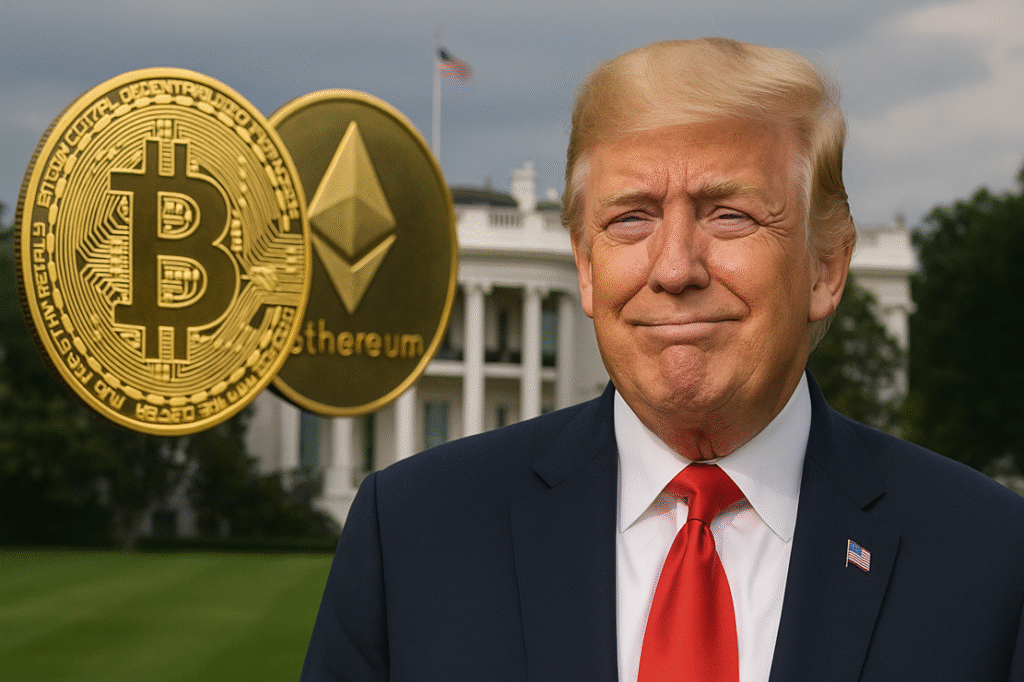In the ever-evolving landscape of digital currencies, government policy and legislative initiatives shape how cryptocurrencies are integrated into the broader financial system. As digital assets grow in importance, understanding the intersection of regulation and innovation becomes crucial for investors, policymakers, and enthusiasts alike.
Trump’s Endorsement of Tax Breaks for Low-Value Cryptocurrency Transactions
During a recent press briefing, Press Secretary Karoline Leavitt confirmed President Donald Trump’s enduring support for a tax exemption on low-value cryptocurrency transactions, which aims to simplify their use for everyday purchases. This move seeks to eliminate the cumbersome micro-accounting currently required for calculating capital gains tax each time digital assets are spent. The proposed policy could transform the ease of using cryptocurrencies, akin to common transactions like purchasing a coffee.
Proposed Cryptocurrency Tax Exemption
The idea of a de minimis exemption is gaining traction in the U.S. capital. Recently, the House of Representatives advanced the Genius Act—a comprehensive federal framework for stablecoins—and another bill to implement a de minimis standard within the Internal Revenue Code. This legislative momentum signifies a growing recognition of the need to adapt tax laws to the unique characteristics of digital currencies.
Importantly, this push for tax reform follows efforts from senators Pat Toomey and Kyrsten Sinema in 2022, who introduced legislation advocating for a $200 transaction exemption. The updated $600 threshold now enjoys White House support, suggesting a shift toward broader acceptance of cryptocurrency transactions by aligning them more closely with foreign currency rules. This alignment is considered vital for encouraging the widespread use of cryptocurrencies in retail.
Broader Regulatory Strategies
While advancing these measures, the Trump administration remains firmly opposed to a central bank digital currency (CBDC), reiterating this stance through a January executive order. The order prevents the Federal Reserve from issuing a CBDC, aiming to ensure that private market innovations lead the way in the digital currency space.
The administration’s comprehensive regulatory package—spanning stablecoin oversight, clear securities rules, and an anti-CBDC statute—demonstrates a commitment to establishing a favorable environment for America to lead in digital asset adoption. The proposed $600 tax exclusion aims to facilitate smaller cryptocurrency transactions while maintaining tax obligations for more significant transfers, ensuring a balanced approach to usability and revenue security.
Future Legislative Prospects
The proposed de minimis exemption faces further scrutiny in the Senate, where discussions will determine the final threshold, potentially adjusting it for inflation. Nevertheless, the endorsement from the White House is a significant boost to the initiative, underscoring a presidential commitment to supporting pro-crypto legislation.
Despite current debates on transaction thresholds, Bitcoin remains a central focus for investors, with its market behavior closely watched. At the time of reporting, Bitcoin was trading at $120,576—a figure reflecting ongoing volatility and opportunity in the cryptocurrency markets.
FAQs about Crypto Tax Exemption Policies
What is a de minimis tax exemption for cryptocurrencies?
A de minimis tax exemption allows small cryptocurrency transactions to be exempt from capital gains taxation. Its purpose is to reduce the transactional friction associated with using digital assets for everyday purchases, similar to typical cash transactions.
Why does the Trump administration oppose a central bank digital currency (CBDC)?
The administration believes that innovations in digital currency should be driven by the private sector rather than government-issued currencies. They view a CBDC as potentially limiting to private solutions and innovation in the digital asset market.
Will the proposed $600 threshold for tax exemption change?
The final threshold is subject to Senate discussions, which may result in adjustments, such as indexing for inflation. The objective is to find a balance that supports usability while ensuring sufficient tax revenue.
This comprehensive guide to cryptocurrency tax reform and the regulatory landscape highlights the potential impacts on digital asset integration within the mainstream economy, providing key insights for informed decision-making.

